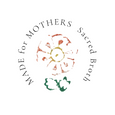So... it appears that after many, many years solely tuned to a 24 hour cycle, otherwise known as the circadian rhythm, that we - ladies - have increasingly fallen into hormonal imbalance with knock on effects to our emotional wellbeing, our energy levels, our ability to focus, our libido and our ability to reproduce.
Women are not biochemically wired to do the same activities or follow the same dietary rules day-in and day-out. Instead, we should be tuning into our (monthly-ish) menstrual cycle and changing our diet and lifestyle based on the phase of menstruation we are in, to better the state of our bodies and being.
And how have we become so deterred from this vital piece of knowledge which enables women to thrive?? Well turns out that women are left out of medical research (ironically for that very same reason - our menstrual cycle provides too many variables for the research to be controlled) which means we are increasingly buying into dogma that is based on research of male physiology.
So without further adieu - let me introduce you to the infradian rhythm. The infradian rhythm is the internal female rhythm based on our monthly cycle (sometimes longer or shorter than a month depending on your own unique biochemistry), or alternatively known as our menstrual cycle. It is defined as infradian as it is longer than the 24 hour cyclic period of our circadian rhythm.
There are distinct emotional, spiritual and biological changes which occur during this infradian rhythm, due to the menstrual cycle's physiological link to metabolism, the immune system, the neurological system, the stress responses, the microbiome, and our reproductive system. Two interesting biological changes during this period, and also practically applicable to everyday lifestyle, are the variations to our metabolism and cortisol levels.
Before I explain those two changes, here is a quick refresh on the four phases that make up the menstrual cycle and define the infradian rhythm
~ Phase 1: Follicular phase otherwise thought of as Spring. This is the 7 to 10 days after your period
~ Phase 2: Ovulatory phase otherwise thought of as Summer. This is the usually 4 days in the middle of your cycle.
~ Phase 3: Luteal phase otherwise thought of as Autumn. This is the 10 to 14 days after ovulation and before your period.
~ Phase 4: Menstrual phase otherwise thought of as Winter. This is the 3 to 7 days of your period.
During follicular phase your metabolism starts to slow, your cortisol is also at it's lowest, making it a prime time for you to reduce your dietary intake and increase your training regime. You are more likely to burn fat stores but without detriment to your inflammatory response and blood sugar levels as cortisol is well under control. This is your time to work on your fitness and strength whilst curbing weight gain and excess fat stores.
On the flip side. In your luteal phase your metabolism is super high, coupled with increasing hormonal production, you need a much higher dietary intake which is full of complex carbohydrate, healthy fats and plenty of protein. Your cortisol is also higher and whilst stabilising your blood sugars with a sensible dietary intake, you also need to slow down your workouts to more supportive training such as pilates and yoga or you will not only inflame your body but you'll also end up exhausted, depleted and gaining weight in this high stress mode.
Uncovering these pearls of wisdom to empower women to a more balanced, supportive and productive lifestyle is to enable women to live full bloom. The menstrual cycle is not something to dread, it is something to celebrate and to realise as a powerful tool with incredible outcomes for you emotional and physical well-being.
References
Pope, A., Wurlitzer, S., (2017). Wild Power. Australia: Hay House.
Hendrickson, L., (2019). The Fifth Vital Sign. Fertility Friday Publishing.
Briden. L., (2017). 2nd Edition. Period Repair Manual.































